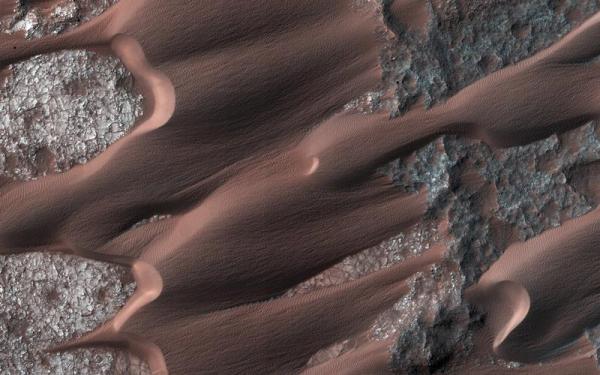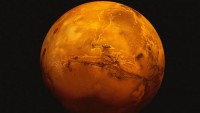NASA Relies On Students’ Ideas For Bringing Cargo On Mars?
| Darlene Tverdohleb | | Sep 22, 2015 11:15 AM EDT |
(Photo : Reuters/NASA handout via Reuters) The surface of Mars.
The United States space agency addresses this challenge of how to bring huge cargos on Mars through the development of large aeroshells that can provide good aerodynamic drag to decelerate and deliver larger payloads.
According to Tehelka, with plans to land cargo on Mars, American Space Agency, NASA, is looking forward to get new bright ideas from college and university students. The agency will be using inflatable spacecraft heat shields or the hypersonic inflatable aerodynamic decelerator (HIAD) technology.
Like Us on Facebook
Steve Gaddis, Game Changing Development Programme manager at NASA's Langley Research Center in Hampton, Virginia, said that the agency is currently developing and flight testing the HIADs, which is a new class of relatively lightweight deployable aeroshells that could safely deliver more than about 20,000 kilograms of a certain object to the surface of the Red Planet.
The agency's popular Mars Curiosity rover is yet the heaviest payload that has ever landed on Mars. It only weighs about almost a thousand kilograms compared to a spacecraft with its crew landing on Mars with the weight of about almost 14,000 to around 28,000 kilograms. Therefore, it is quite a big challenge for NASA on how to increase the weight but will still be able to land safely with a vehicle that carries a substantially heavier load through the thin Martian atmosphere.
The agency then faces this challenge, according to Latest News, by asking the interested teams of three to five undergraduate and/or graduate students to submit their ideas that describe their concepts by November 15. It is apparent that HIAD technology is a leading idea because aeroshells can also generate lift that would allow NASA to potentially do other different kinds of missions.
Selected teams will continue in the competition by submitting in early 2016 their full technical papers with regard to their chosen concept. Only up to four teams will then present their concepts to NASA's panel of judges at the BIG Idea Forum in April 2016 at Langley. Each finalist team will receive U.S. $6,000 stipend to assist with their full participation in the forum.
TagsNASA, Mars Curiosity rover, red planet, Tehelka, HIAD
©2015 Chinatopix All rights reserved. Do not reproduce without permission
EDITOR'S PICKS
-

Did the Trump administration just announce plans for a trade war with ‘hostile’ China and Russia?
-

US Senate passes Taiwan travel bill slammed by China
-

As Yan Sihong’s family grieves, here are other Chinese students who went missing abroad. Some have never been found
-

Beijing blasts Western critics who ‘smear China’ with the term sharp power
-

China Envoy Seeks to Defuse Tensions With U.S. as a Trade War Brews
-

Singapore's Deputy PM Provides Bitcoin Vote of Confidence Amid China's Blanket Bans
-

China warns investors over risks in overseas virtual currency trading
-

Chinese government most trustworthy: survey
-

Kashima Antlers On Course For Back-To-Back Titles
MOST POPULAR
LATEST NEWS
Zhou Yongkang: China's Former Security Chief Sentenced to Life in Prison

China's former Chief of the Ministry of Public Security, Zhou Yongkang, has been given a life sentence after he was found guilty of abusing his office, bribery and deliberately ... Full Article
TRENDING STORY

China Pork Prices Expected to Stabilize As The Supplies Recover

Elephone P9000 Smartphone is now on Sale on Amazon India

There's a Big Chance Cliffhangers Won't Still Be Resolved When Grey's Anatomy Season 13 Returns

Supreme Court Ruled on Samsung vs Apple Dispute for Patent Infringement

Microsoft Surface Pro 5 Rumors and Release Date: What is the Latest?












